Bijl Architecture reinterprets the traditional Dutch gable for a Sydney residence
Sections of brick, zinc, timber and concrete highlight the intentionally irregular form of this Sydney residence – a result of myriad planning restrictions (+ slideshow).
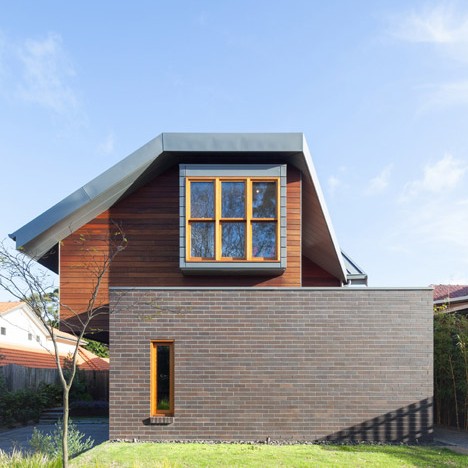
Naremburn House was designed by local studio Bijl Architecture for a plot in a Sydney neighbourhood hemmed in by existing properties.
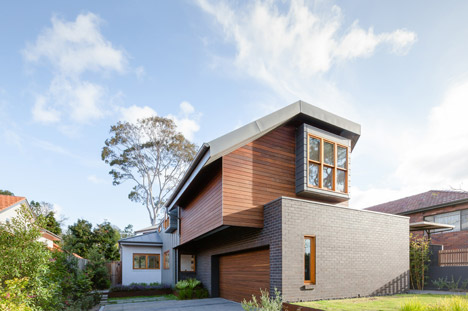
A number of planning restrictions dictated the scale of the new building, creating an irregular form that is made up of volumes that vary in proportion. The result represents a mixture of references to traditional styles.
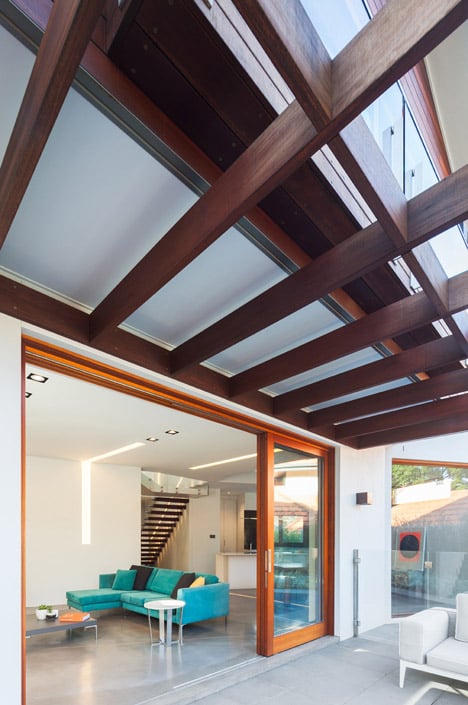
"[The house] interrogates traditional typologies, providing a site-specific response with an emphasis on thoughtful spatial planning and a robust materiality," said the architects.
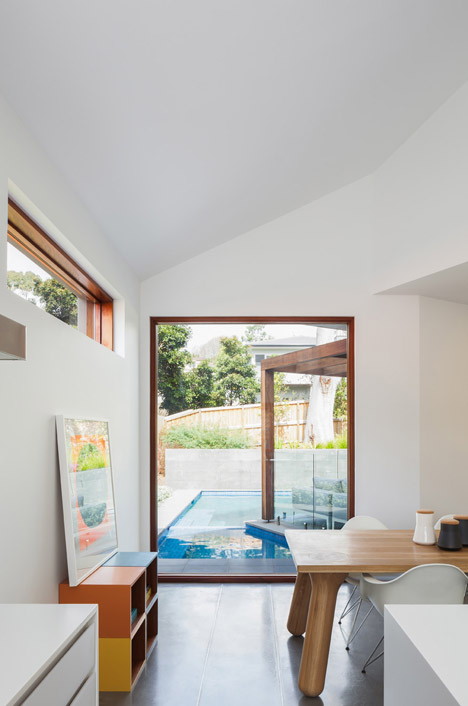
The asymmetric roof was designed as a reinterpretation of a traditional Dutch gable – also known as a gablet roof – which typically is a hipped roof with a small gable at the top. It also features one eave that is lower that the other, referencing a type of roof known as a catslide.
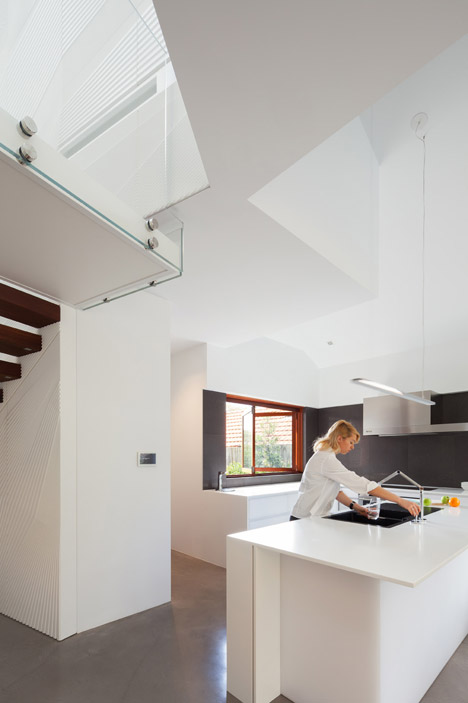
"A formal re-interpretation of traditional roof forms, such as the Dutch gable and catslide roof, allows a compact streetscape frontage that matches the scale of surrounding properties, while volumetric opportunities offered by the roof form are exploited to provide a useful and capacious floor plan," said the design team.
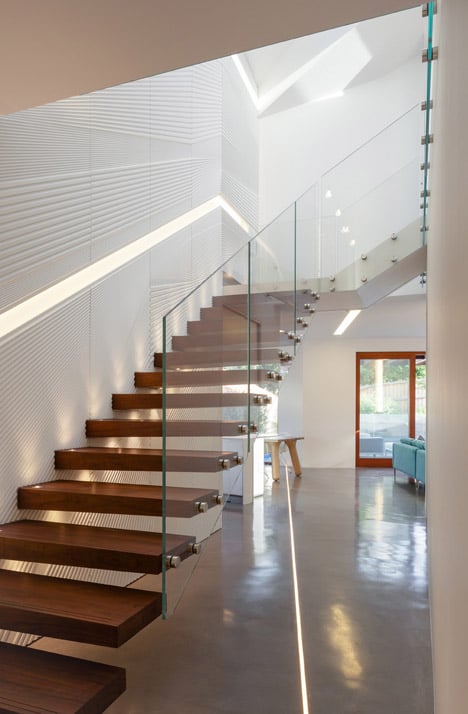
"The Naremburn House manipulates the site topography through shifting volumes and geometries, playing with light, materials and form to create a house underpinned by an intentional irregularity," they added.
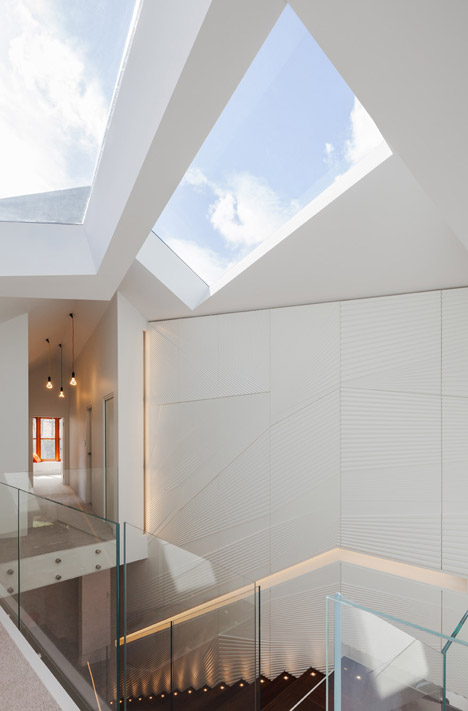
The catslide roof features on one section of the upper storey, which cantilevers over the lower storey at the rear and side of the house.
It is clad in lengths of red-brown timber and supported by a set of wooden legs at the back of the house, creating a covered terrace between the living room and swimming pool.
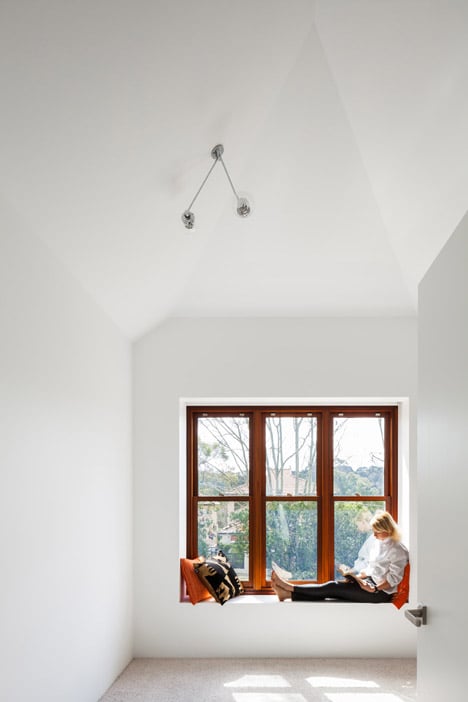
Internally, polished concrete floors are paired with white walls and timber-framed windows.
"Key to the design and realisation of the Naremburn House was the clients' desire to reside in the dwelling for the long term," added the architects, describing their choice of hardwearing materials throughout.
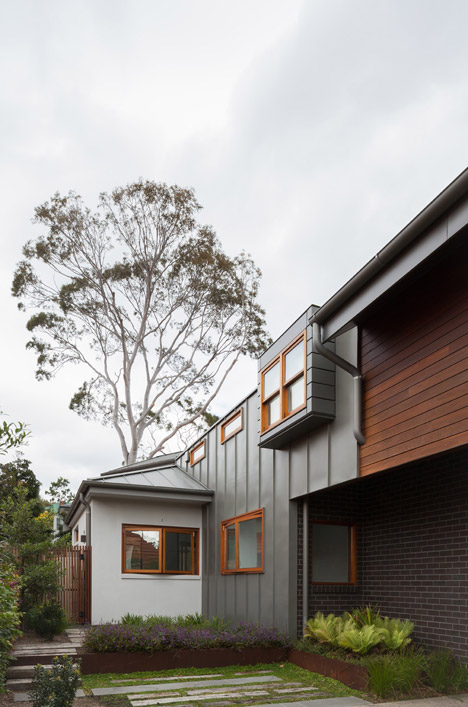
A double-height wall that follows the ascent of the central stairwell is covered in carved white Corian.
Based on parametric drawings, the ridged patterns were CNC machined into the surface of the composite material.
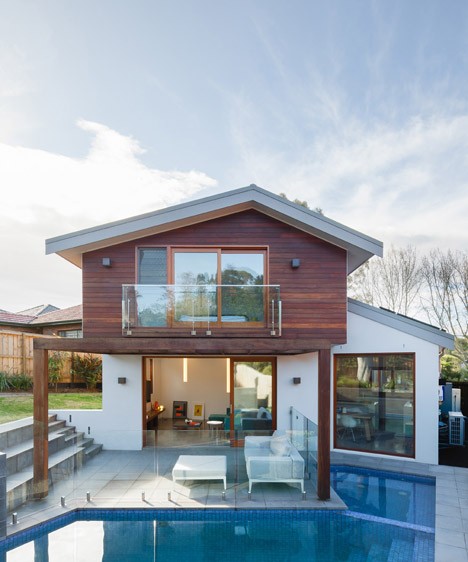
Four bedrooms were arranged around the stairwell on the upper floor, which is topped by two angled skylights. Glass balustrades allow light to pass into both the bedrooms and to the open-plan kitchen and living room below.
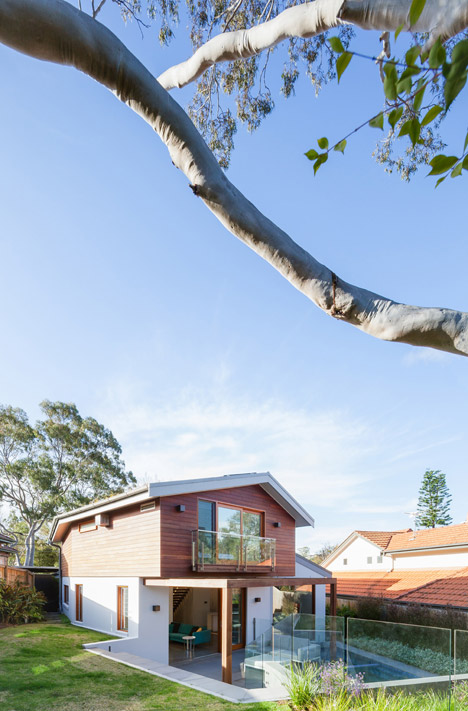
A combination of spot and strip lighting is set into the ceiling and wall of the living room. Sliding glass doors open from this space onto the poolside terrace, and cast-concrete steps lead up from the slightly sunken terrace into the back garden.



